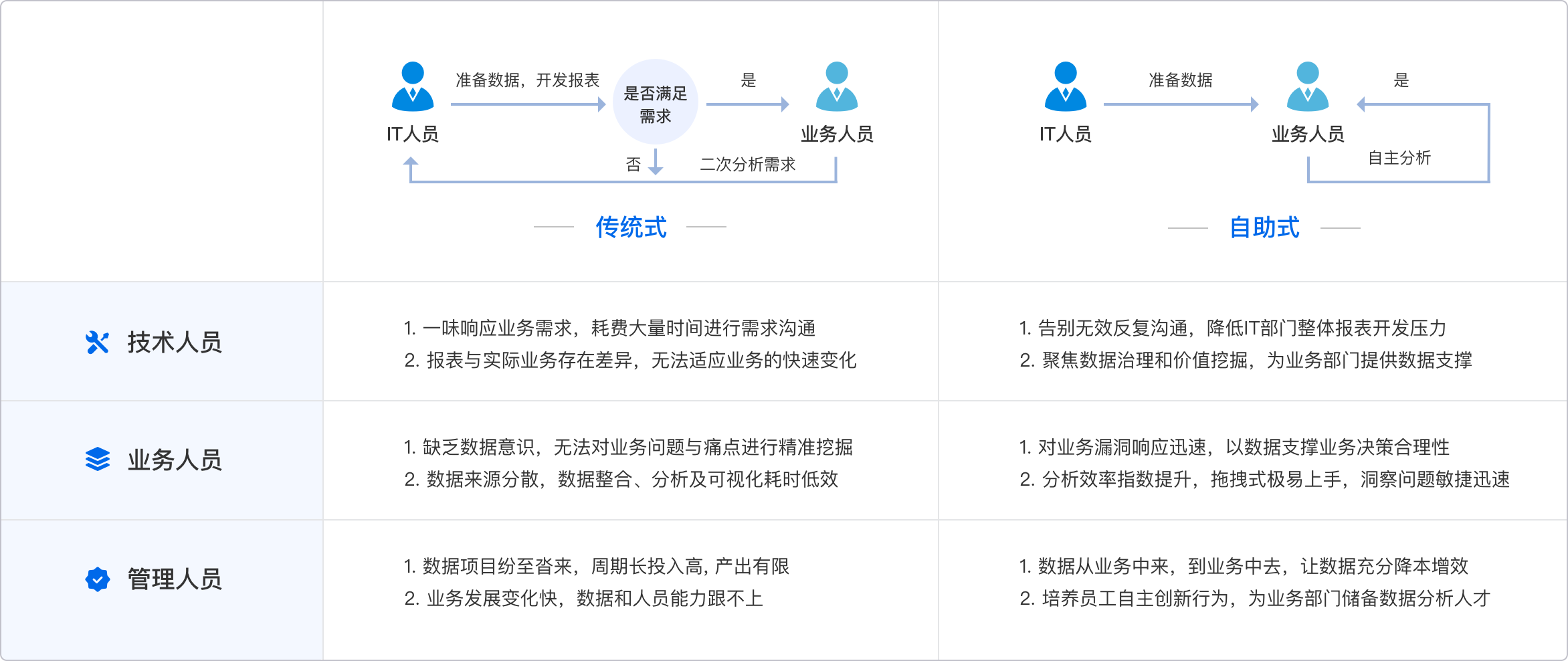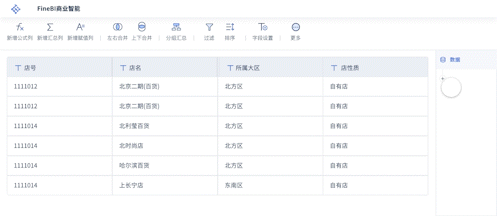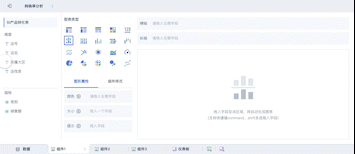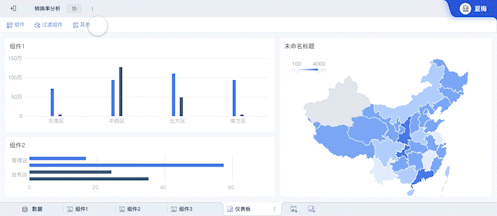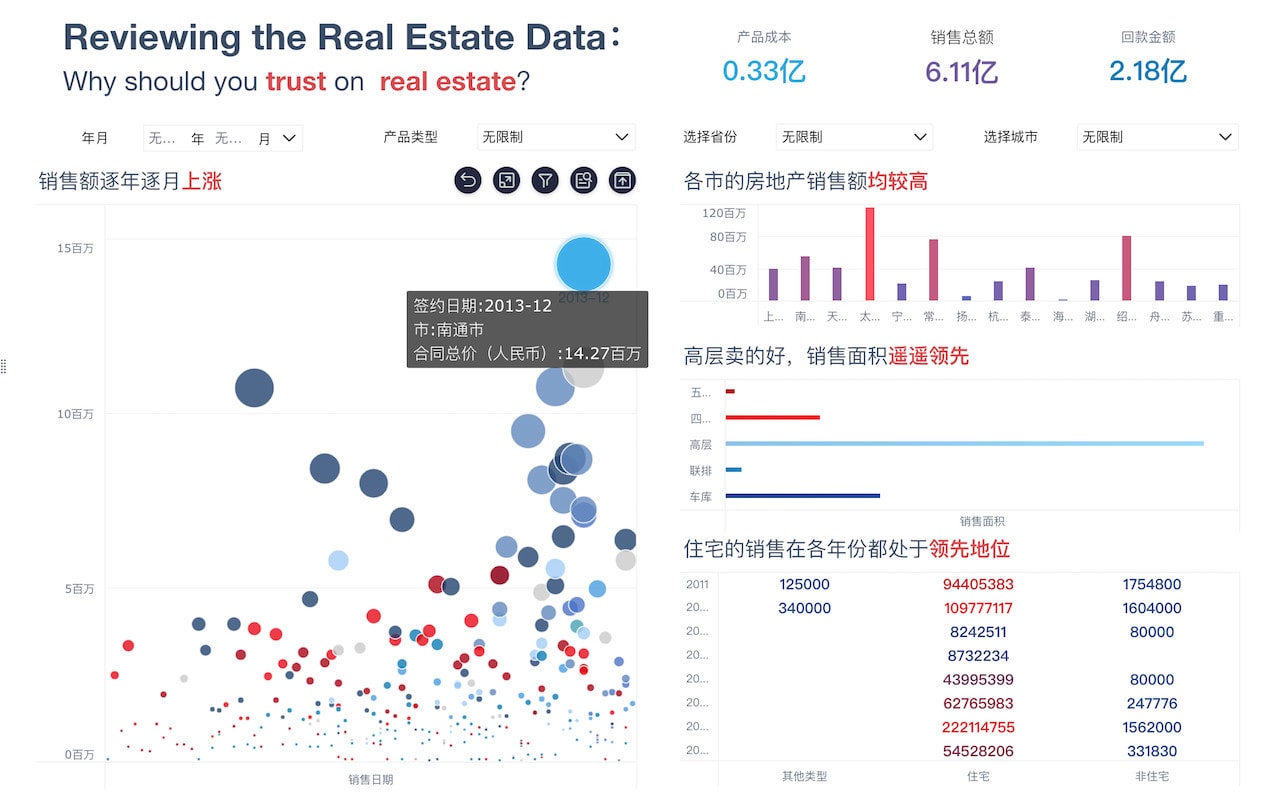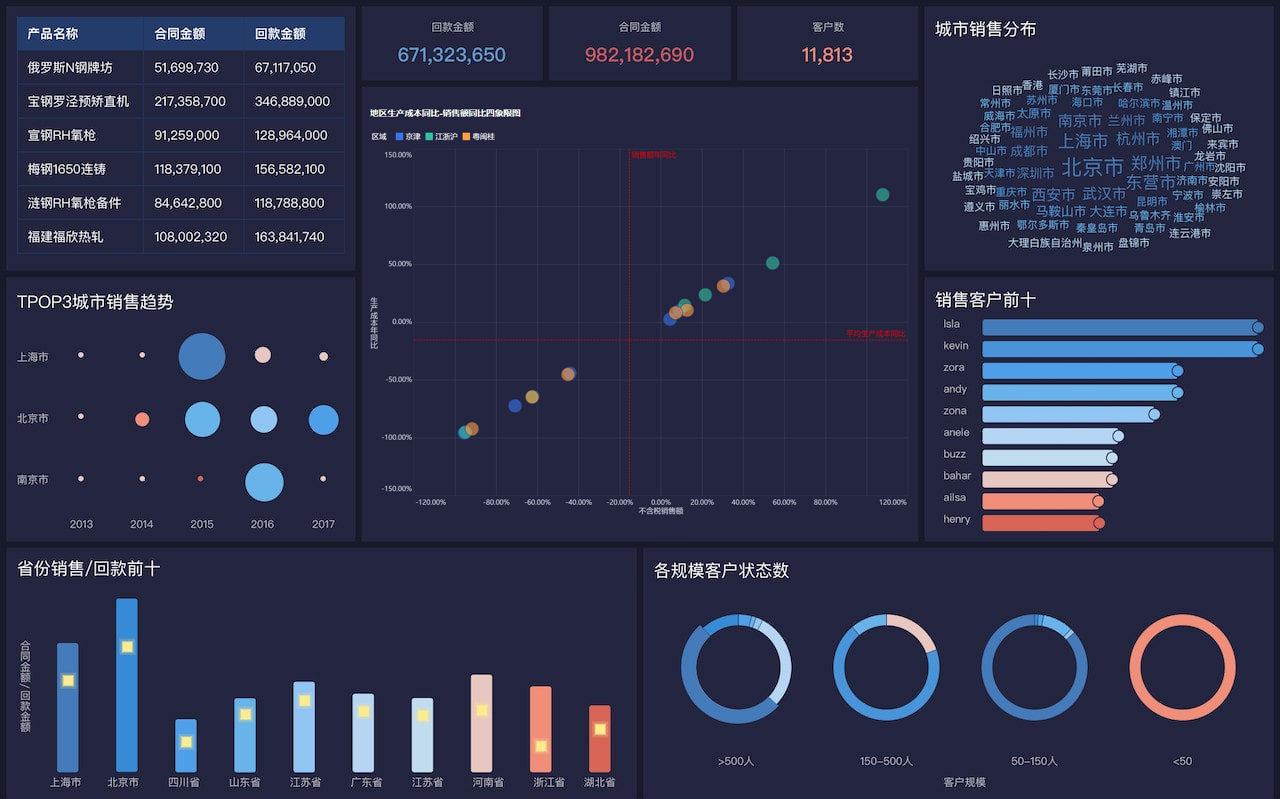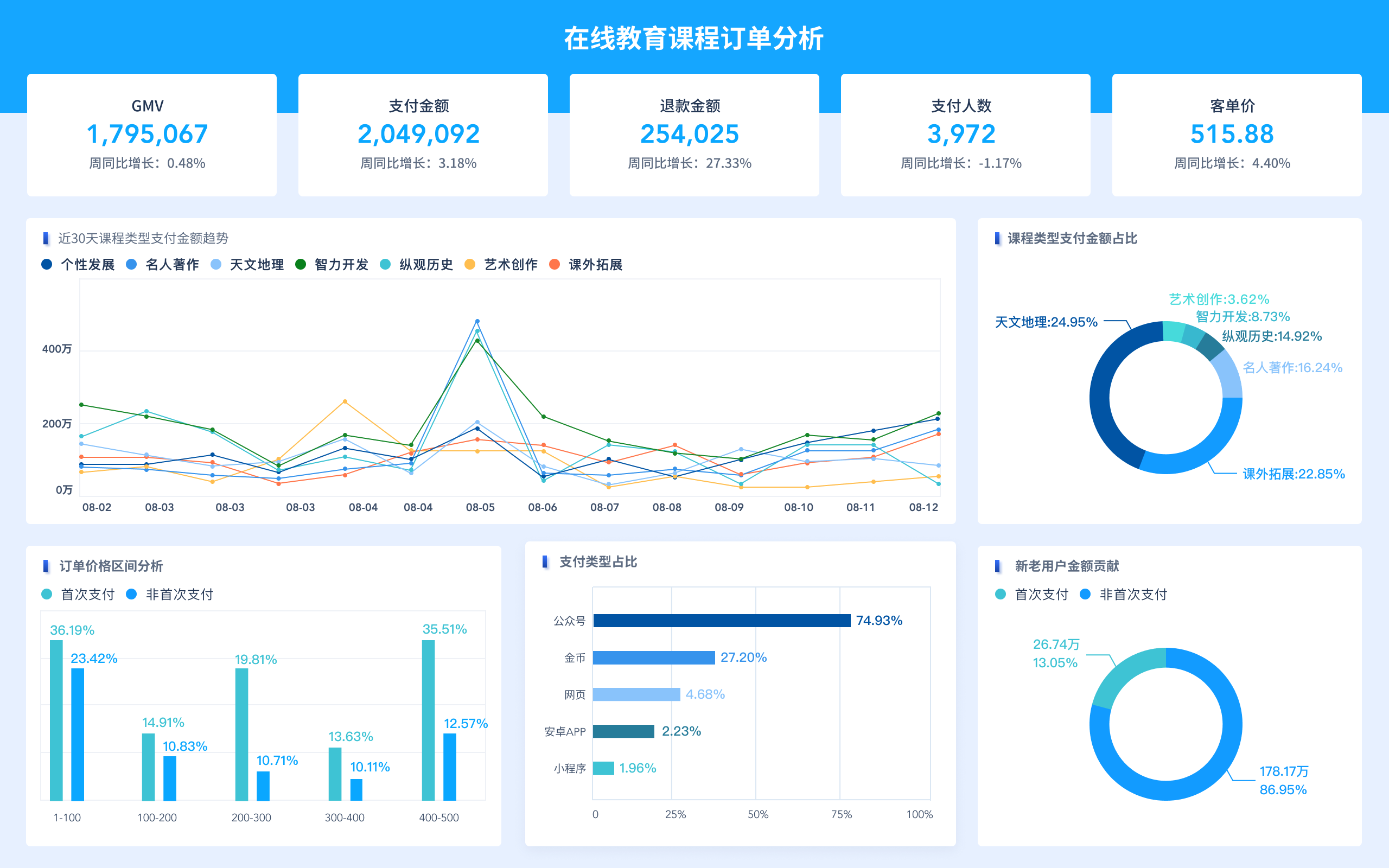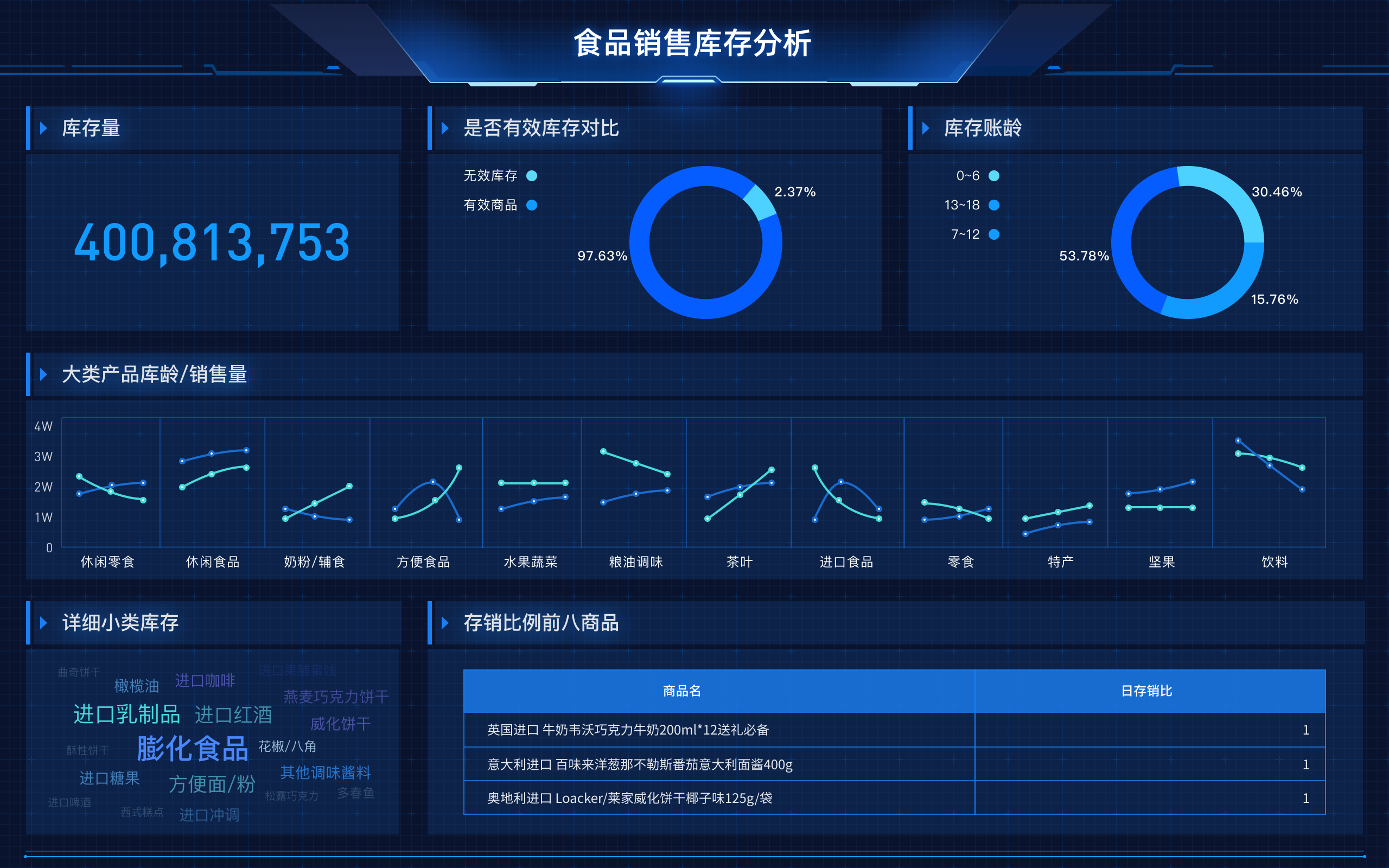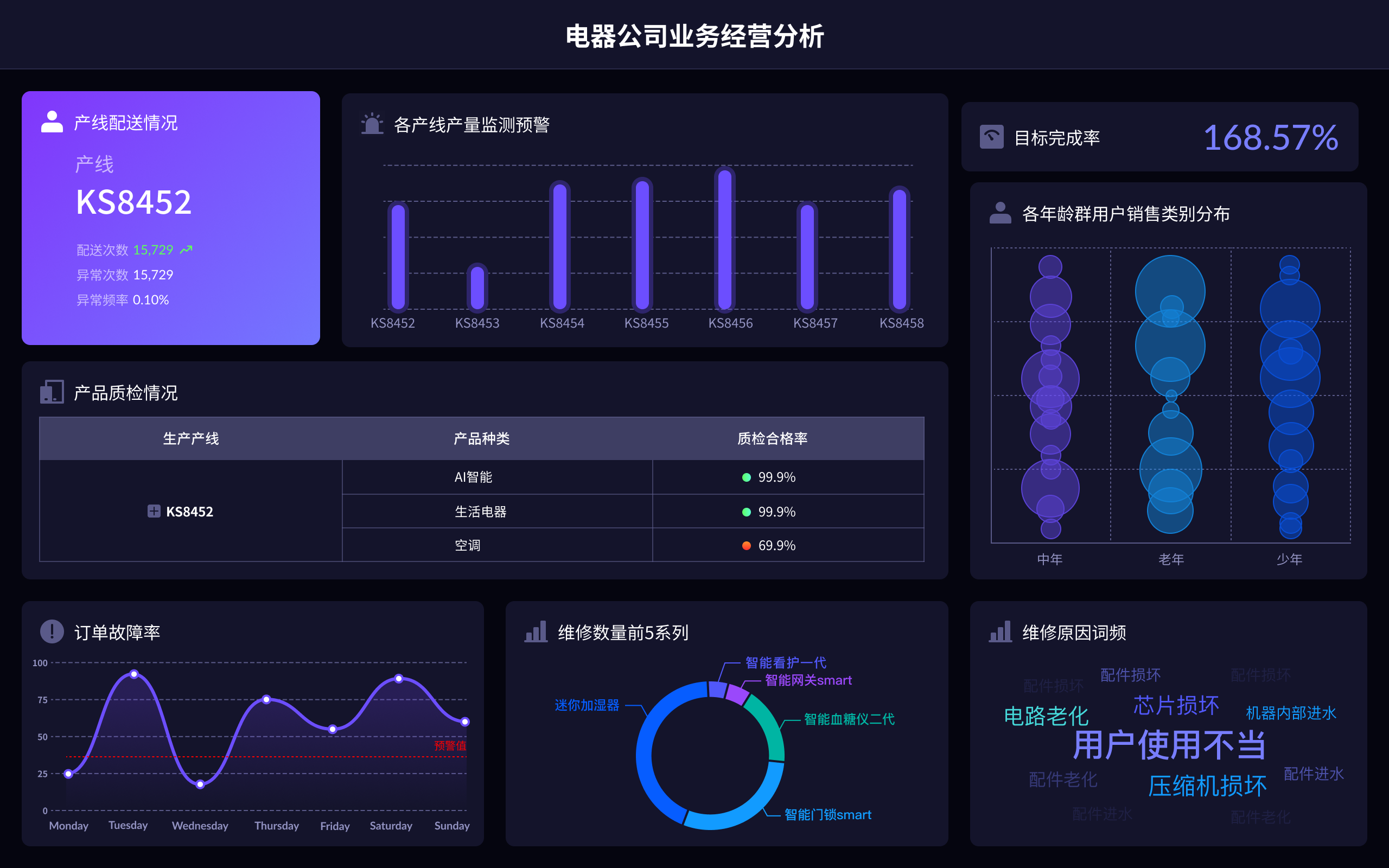
Data visualization is the term used for "数据可视化" in English. Data visualization refers to the graphical representation of information and data. By using visual elements like charts, graphs, and maps, data visualization tools provide an accessible way to see and understand trends, outliers, and patterns in data.
一、THE IMPORTANCE OF DATA VISUALIZATION
In today’s data-driven world, the ability to visualize data effectively is crucial. Data visualization helps in identifying trends, making data more accessible, enhancing data storytelling, and improving decision-making processes. For instance, when businesses use data visualization tools such as FineBI, they can quickly identify patterns and trends in their sales data, enabling them to make informed strategic decisions. FineBI offers a user-friendly interface that simplifies the process of creating insightful visualizations, empowering users to delve deeper into their data without needing extensive technical expertise. The visual representations provide an immediate understanding of complex datasets, making it easier for stakeholders to digest and act on the information.
二、KEY ELEMENTS OF EFFECTIVE DATA VISUALIZATION
Effective data visualization encompasses several critical elements that ensure the information is presented clearly and accurately. Clarity is paramount; visualizations should eliminate any ambiguity, allowing viewers to grasp the data’s message quickly. Accuracy ensures that the data is represented correctly, avoiding any misleading interpretations. Relevance is about presenting data that is pertinent to the audience’s needs and objectives. Tools like FineReport are designed to help users create precise and relevant visualizations by offering customizable templates and a wide range of chart types. This flexibility ensures that the visualizations align closely with the specific goals of the analysis, whether it’s for financial reporting, operational monitoring, or market analysis.
三、TOOLS AND TECHNOLOGIES FOR DATA VISUALIZATION
Several tools and technologies are available to aid in data visualization, each with unique features suited to different use cases. FineBI, FineReport, and FineVis are notable products from Fanruan that cater to various visualization needs. FineBI focuses on business intelligence, providing robust tools for data analysis and dashboard creation. FineReport is geared towards professional report development, offering extensive customization options and powerful data processing capabilities. FineVis is designed for advanced data visualization, enabling users to create intricate and detailed visual representations of complex datasets. These tools not only enhance the visual appeal of data but also improve the accuracy and effectiveness of data analysis, making them invaluable assets for any organization looking to leverage data for strategic advantage.
四、APPLICATIONS OF DATA VISUALIZATION IN DIFFERENT INDUSTRIES
Data visualization finds applications across various industries, each benefiting from its ability to simplify and enhance data interpretation. In the healthcare industry, visualizations are used to track patient outcomes, monitor the spread of diseases, and improve operational efficiencies. Financial services utilize data visualization to analyze market trends, assess risks, and optimize portfolio management. Retail businesses leverage visual tools to understand consumer behavior, manage inventory, and enhance marketing strategies. Tools like FineVis offer advanced capabilities to create sector-specific visualizations that address unique industry challenges, ensuring that the insights derived are both relevant and actionable. The adaptability and precision of these tools make them indispensable for sector-specific analytics, driving performance and innovation.
五、BEST PRACTICES FOR CREATING DATA VISUALIZATIONS
Creating effective data visualizations requires adherence to best practices that enhance clarity, accuracy, and impact. Choosing the right chart type is essential; different data types and relationships are best represented by specific chart formats. Simplifying the design by avoiding unnecessary elements helps in keeping the focus on the data. Using color effectively can highlight key data points without overwhelming the viewer. Providing context through labels, legends, and annotations ensures that the viewer understands the data’s background and significance. Tools like FineReport provide extensive customization options, enabling users to adhere to these best practices effortlessly. By leveraging these tools, users can create visualizations that are not only visually appealing but also highly informative and actionable.
六、FUTURE TRENDS IN DATA VISUALIZATION
The field of data visualization is continually evolving, with new trends and technologies shaping its future. Interactive visualizations are becoming increasingly popular, allowing users to engage with the data dynamically. Artificial Intelligence (AI) and Machine Learning (ML) are being integrated into visualization tools, enabling automated insights and predictive analytics. Augmented Reality (AR) and Virtual Reality (VR) are opening new frontiers for immersive data experiences. Tools like FineBI and FineVis are at the forefront of these innovations, offering features that support interactive and advanced visualizations. As these technologies continue to advance, the potential for data visualization to drive deeper insights and more informed decision-making will only grow, solidifying its role as a critical component of data analysis.
七、CHALLENGES IN DATA VISUALIZATION AND HOW TO OVERCOME THEM
Despite its benefits, data visualization comes with its own set of challenges. Data quality issues can lead to inaccurate visualizations, so ensuring the data is clean and reliable is crucial. Overcomplication of visualizations can obscure the data’s message; simplicity and clarity should always be prioritized. User interpretation can vary, so providing context and clear explanations is necessary to avoid misinterpretation. Tools like FineReport and FineBI offer features that help mitigate these challenges, such as data validation processes, user-friendly interfaces, and extensive documentation and support. By leveraging these tools effectively, organizations can overcome common visualization challenges and maximize the value derived from their data.
八、CONCLUSION
Data visualization is an essential tool in the modern data landscape, offering numerous benefits such as improved understanding of data, enhanced decision-making, and effective communication of insights. With tools like FineBI, FineReport, and FineVis, organizations can harness the power of data visualization to transform raw data into meaningful visual narratives. As the field continues to evolve, staying abreast of the latest trends and best practices will ensure that visualizations remain accurate, impactful, and relevant. By overcoming common challenges and leveraging advanced visualization tools, businesses can unlock deeper insights and drive strategic success.
FineBI官网: https://s.fanruan.com/f459r
FineReport官网: https://s.fanruan.com/ryhzq
FineVis官网: https://s.fanruan.com/7z296
相关问答FAQs:
1. What is the English translation for "数据可视化"?
The English translation for "数据可视化" is "data visualization." Data visualization is the graphical representation of information and data. By using visual elements like charts, graphs, and maps, data visualization tools provide an accessible way to see and understand trends, outliers, and patterns in data.
2. Why is data visualization important in today's world?
Data visualization is essential in today's world because it allows individuals and organizations to make sense of vast amounts of complex data. By presenting data visually, it becomes easier to identify correlations, trends, and insights that might not be apparent in raw data. This, in turn, enables better decision-making, improved communication of findings, and the ability to tell compelling stories with data.
3. What are some popular tools used for data visualization?
There are several popular tools used for data visualization, each with its unique features and capabilities. Some of the most widely used tools include:
- Tableau: Tableau is a powerful data visualization tool that allows users to create interactive and shareable dashboards.
- Microsoft Power BI: Power BI is a business analytics tool that provides interactive visualizations and business intelligence capabilities.
- Google Data Studio: Google Data Studio is a free tool that enables users to create customizable reports and dashboards using data from various sources.
- Python with libraries like Matplotlib and Seaborn: Python is a popular programming language for data analysis and visualization, with libraries like Matplotlib and Seaborn offering extensive capabilities for creating static and interactive visualizations.
These tools, among others, play a crucial role in helping individuals and organizations unlock the value of their data through compelling and informative visual representations.
本文内容通过AI工具匹配关键字智能整合而成,仅供参考,帆软不对内容的真实、准确或完整作任何形式的承诺。具体产品功能请以帆软官方帮助文档为准,或联系您的对接销售进行咨询。如有其他问题,您可以通过联系blog@fanruan.com进行反馈,帆软收到您的反馈后将及时答复和处理。


